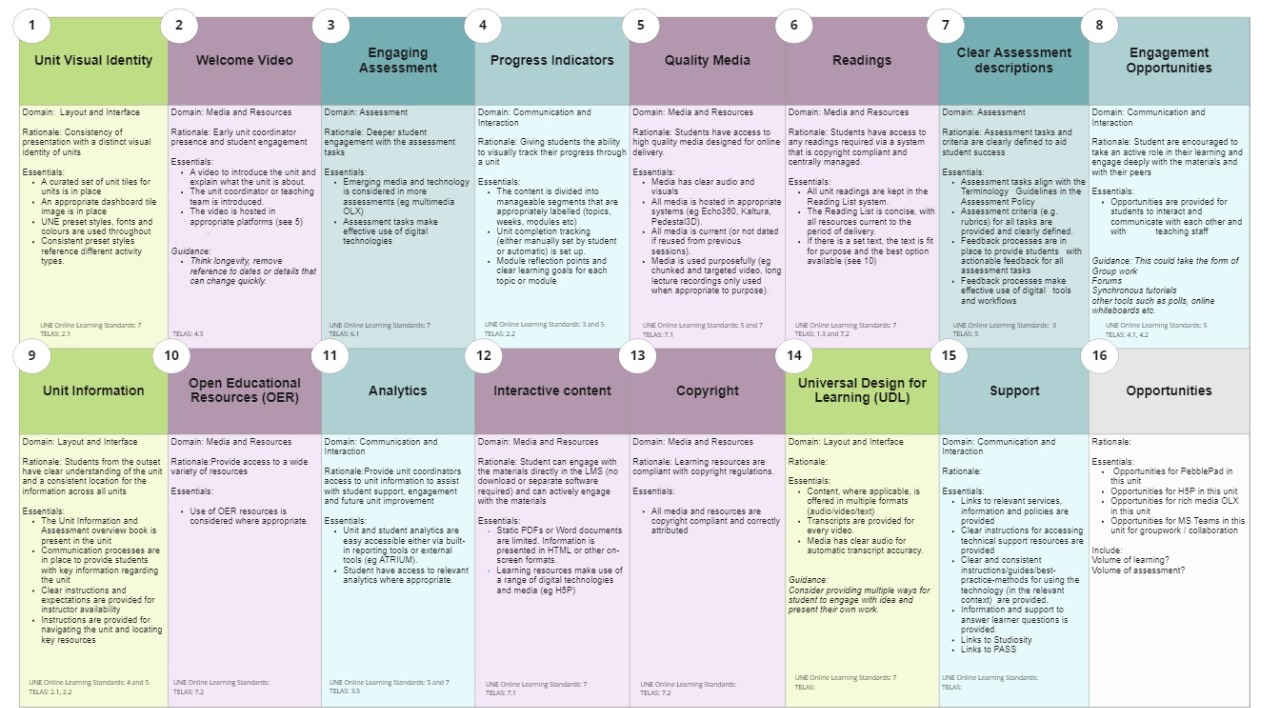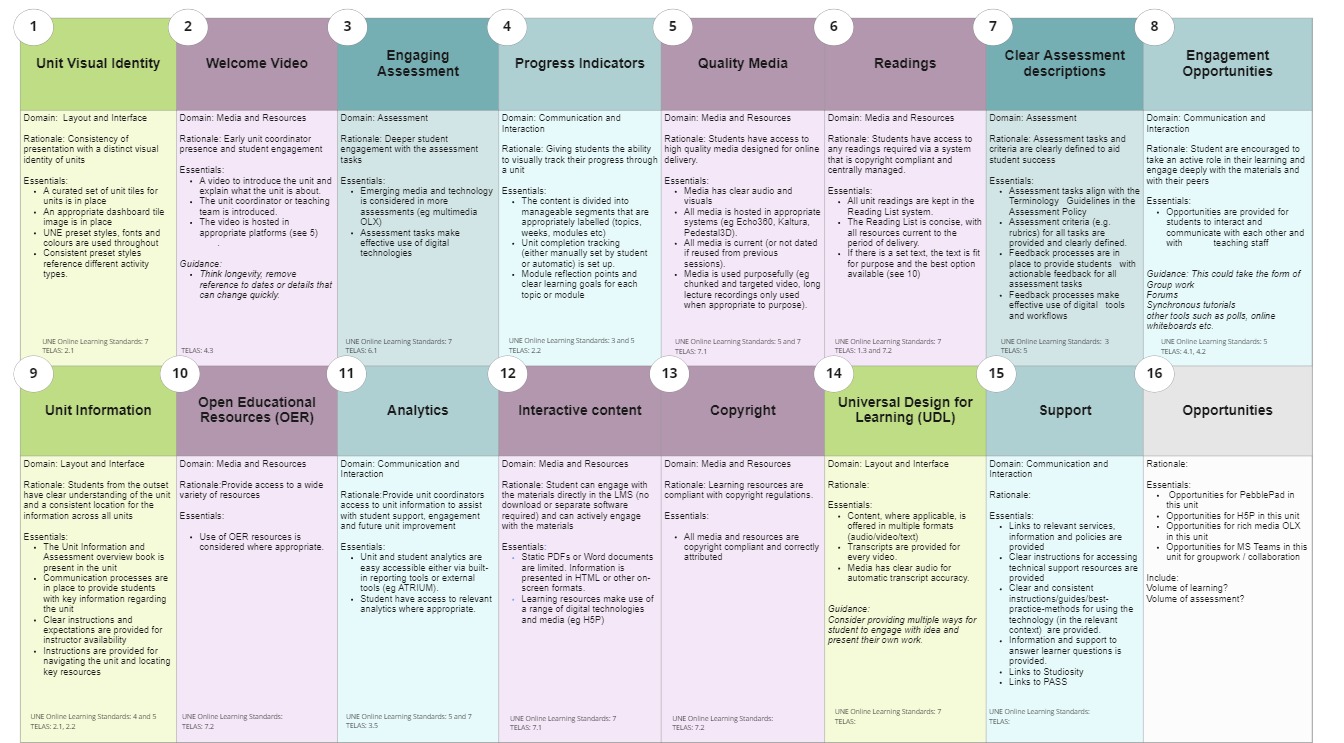

The UNE online learning environment provides many opportunities for active learning. This element encourages unit coordinators to consider how they can, with support, create activities and tasks which encourage the learner to actively engage with their learning in a meaningful and purposeful way without leaving the learning management system.
Active learning as opposed to passivity is the focus of this element. Active learning brings attention to learning as an embodied experience and not just a cognitive activity (Rodríguez-Jiménez & García-Merino, 2017). For example, making notes whilst reading helps stay focused and aware of when our attention is slipping. Online learning can both help support active learning or can give an impression of activity – watching a video – whilst also maintaining a degree of passivity.
Developments in digital technologies provide us with many opportunities to harness learner activity in a variety of ways. The activity still needs to be purposeful, meaningful and relevant. We are not aiming just for busy clicking but for opportunities for further thinking, knowledge checking and collaboration amongst other things.
Research shows that active learning prompts agency, autonomy and motivation.
When students are agents in their learning they are more likely to have “learned how to learn” – an invaluable skills that they can use throughout their lives. (OECD, 2019, p. 2)
Active learning encourages learner self-efficacy and confidence through the ability to self-check learning. Social connection and the relational aspect of learning can also be fostered through utilising digital collaboration opportunities.
Active learning strategies are rooted in constructivist theories of learning that position the learner in control of their own knowledge acquisition, compared to the traditional teacher-student transmission of knowledge referred to as “teaching by telling” (Ivancic and Hesketh, 1995; Smith et al., 1997). Instead of placing the responsibility for learning-based decisions on an external source, typically the teacher, the learner oversees choosing information to process while monitoring physiological arousal including regulating one’s stress response during the learning process (Iran-Nejad, 1990). Active learning requires exploration and experimentation with a goal to develop domain specific skills (Ishiyama, 2013). Though active learning entails a wide breadth of potential activities that can be incorporated inside or outside of traditional classrooms, the central goal is for the learner to be in control of the learning process to create flexible and adaptive thinking. (Kuchynka et al., 2020, p.2)
This element relates to the following research and practice informed guidelines/ frameworks:
TELAS Guidelines
UNE Learning Standards
Some things you can do include:
It’s here:H5P.com Digital Education @ UNE Blog
Support will be provided as part of Project Uplift implementation process.
You can also contact the Learning Design team, learningdesign@une.edu.au for in person advice and guidance.
Teaching Online @ UNE also contains information on how to get started with H5P and other useful information.
Kuchynka, S., Reifsteck, T. V., Gates, A. E., & Rivera, L. M. (2020). Developing Self-Efficacy and Behavioral Intentions Among Underrepresented Students in STEM: The Role of Active Learning. Frontiers in Education, 6. https://doi.org/10.3389/feduc.2021.668239
OECD. (2019). OECD Future of Education and Skills 2023 conceptual learning framework: Student agency for 2030. OECD. https://www.oecd.org/education/2030-project/teaching-and-learning/learning/student-agency/Student_Agency_for_2030_concept_note.pdf
Rodríguez-Jiménez, R., & García-Merino, S. (2017). Enactive and embodied learning in higher education. Functional Neurology, Rehabilitation and Ergonomics, 7(4), 5–9.
TELAS Framework https://www.telas.edu.au/framework/
UNE Online Learning Standards: https://myune.sharepoint.com/sites/academic-transformation/SitePages/Principals-for-Designing-Learning-Experiences-Online.aspx
Domain: Media and Resources
Rationale: Student can engage with the materials directly in the LMS (no download or separate software required) and can actively engage with the materials
Essentials:
Standards: